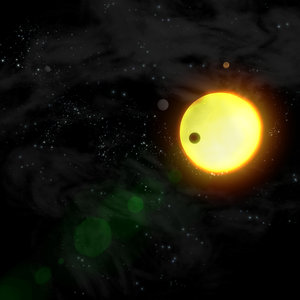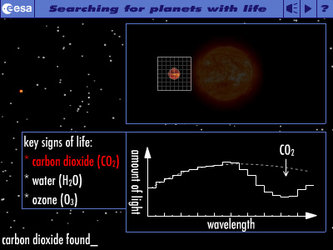Darwin factsheet
Finding Earth-like planets
Status: Study ended in 2007, no further activities planned.
Name The Darwin mission is named after British naturalist Charles Darwin who wrote the ground-breaking book The Origin of Species. Like its namesake, the Darwin mission is looking for the origins of life.
Description A constellation of four or five spacecraft, Darwin proposed to look for Earth-like planets and analyse their atmospheres for chemical signatures of life. One spacecraft would have acted as a central communications hub. The other three would have functioned as light collectors, redirecting light beams to the central hub.
The constellation was also intended to carry out high-resolution imaging using aperture synthesis, to provide pictures of celestial objects with unprecedented detail.
Launch The mission was proposed to be launched by two Soyuz-Fregat launches, likely from Kourou.
Journey Instead of orbiting Earth, Darwin was proposed to be placed far away, beyond the Moon. At a distance of 1.5 million km from Earth, in a direction opposite to that of the Sun, Darwin would have operated from the second Lagrange Point, L2.
Notes Looking for planets that orbit stars outside the Solar System, or extrasolar planets, is very hard. Even for nearby stars, it is like trying to see the feeble light from a candle next to a lighthouse 1000 km away.
At optical wavelengths, a star outshines an Earth-like planet by a thousand million to one. Partly to overcome this difficulty, Darwin proposed to conduct observations in the mid-infrared. At these wavelengths the star-planet contrast drops to a million to one, making detection a little easier.
Another key reason for observing in the infrared is because life on Earth leaves some of its marks at these wavelengths. Gases emitted by planets and animals and other markers such as water, leave their fingerprints by absorbing certain wavelengths of infrared light. Darwin proposed to look for these fingerprints.
To meet its objective and to go one step beyond JWST, Darwin proposed to provide images with 10 - 100 times greater detail than can be achieved now.
Darwin was also proposing to provide detailed images of other objects, such as active galactic nuclei.






